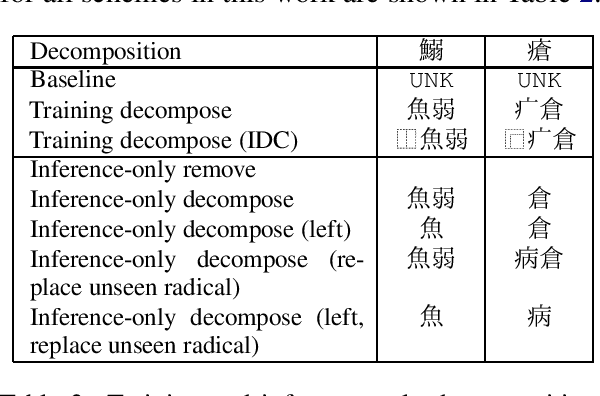Weston Feely
Inference-only sub-character decomposition improves translation of unseen logographic characters
Nov 12, 2020



Abstract:Neural Machine Translation (NMT) on logographic source languages struggles when translating `unseen' characters, which never appear in the training data. One possible approach to this problem uses sub-character decomposition for training and test sentences. However, this approach involves complete retraining, and its effectiveness for unseen character translation to non-logographic languages has not been fully explored. We investigate existing ideograph-based sub-character decomposition approaches for Chinese-to-English and Japanese-to-English NMT, for both high-resource and low-resource domains. For each language pair and domain we construct a test set where all source sentences contain at least one unseen logographic character. We find that complete sub-character decomposition often harms unseen character translation, and gives inconsistent results generally. We offer a simple alternative based on decomposition before inference for unseen characters only. Our approach allows flexible application, achieving translation adequacy improvements and requiring no additional models or training.
 Add to Chrome
Add to Chrome Add to Firefox
Add to Firefox Add to Edge
Add to Edge